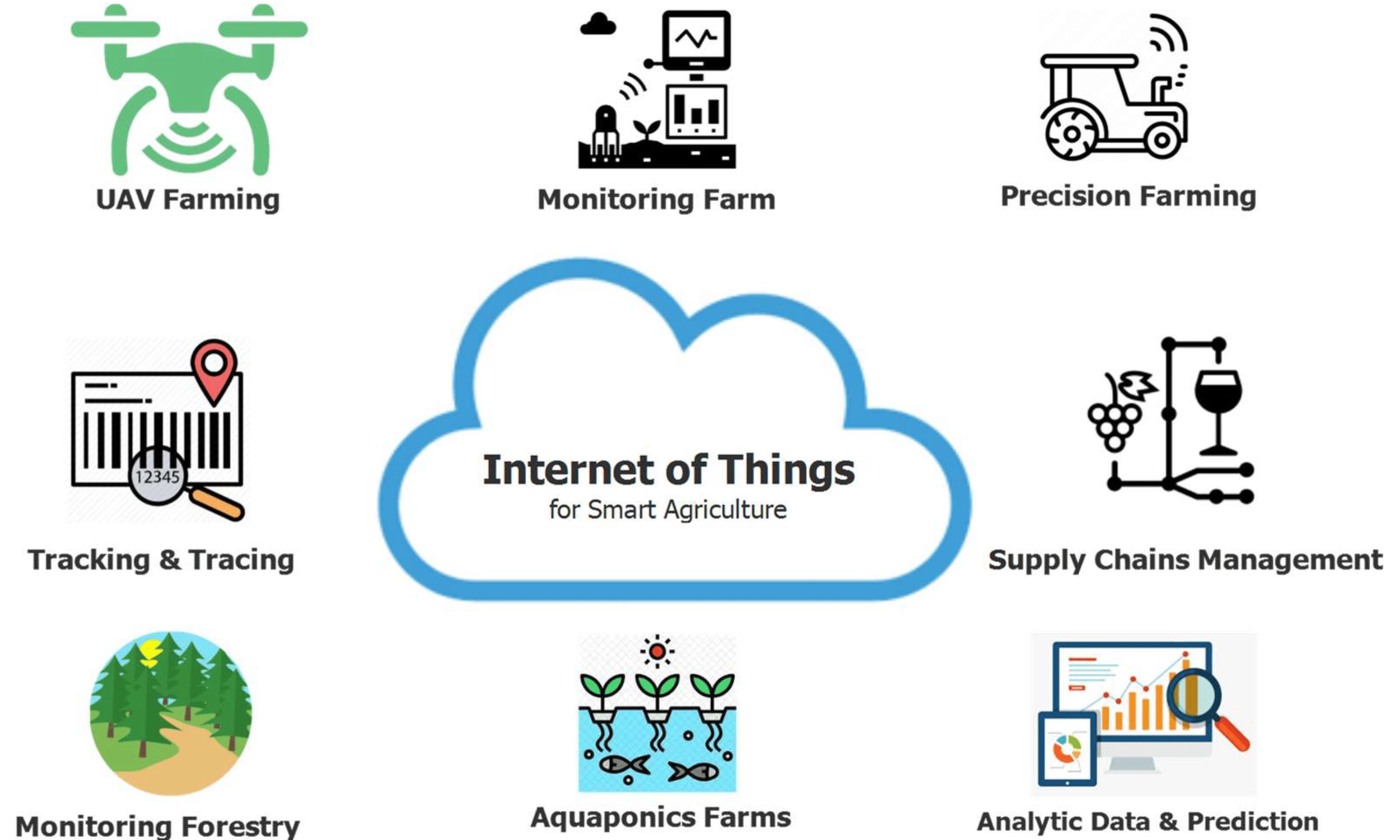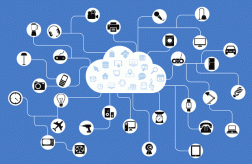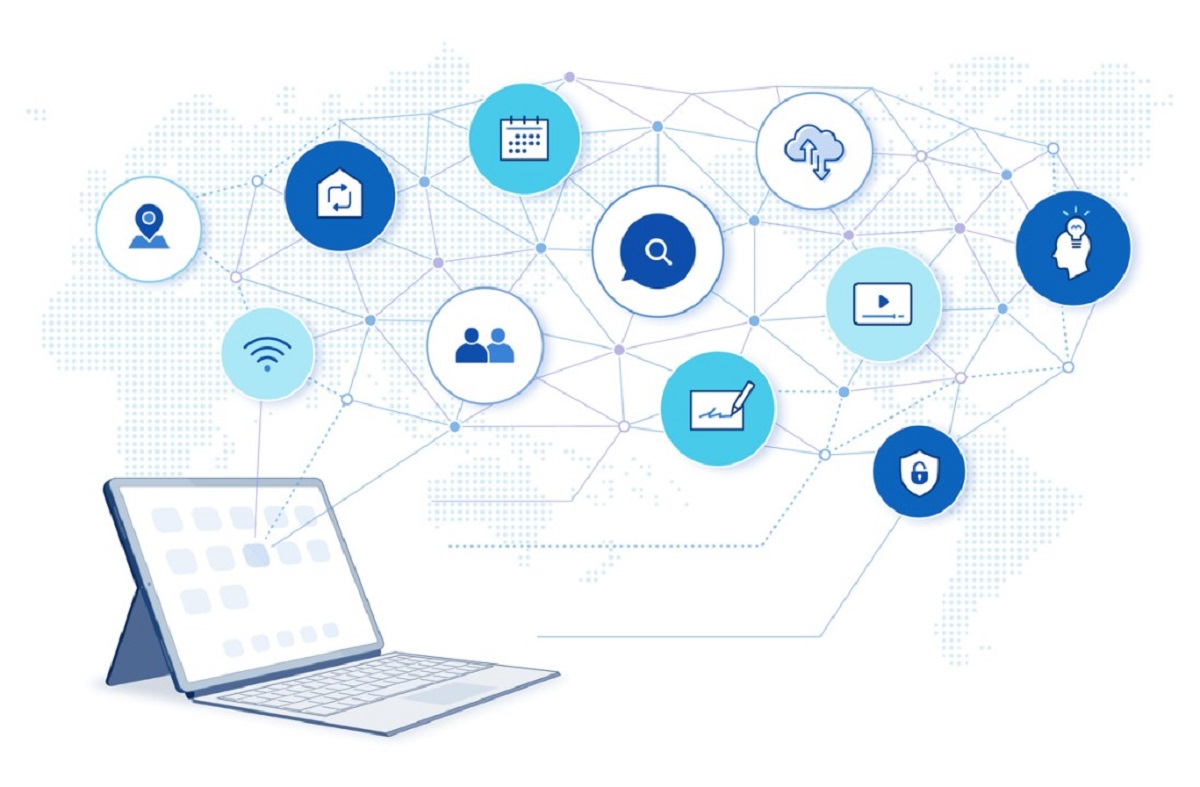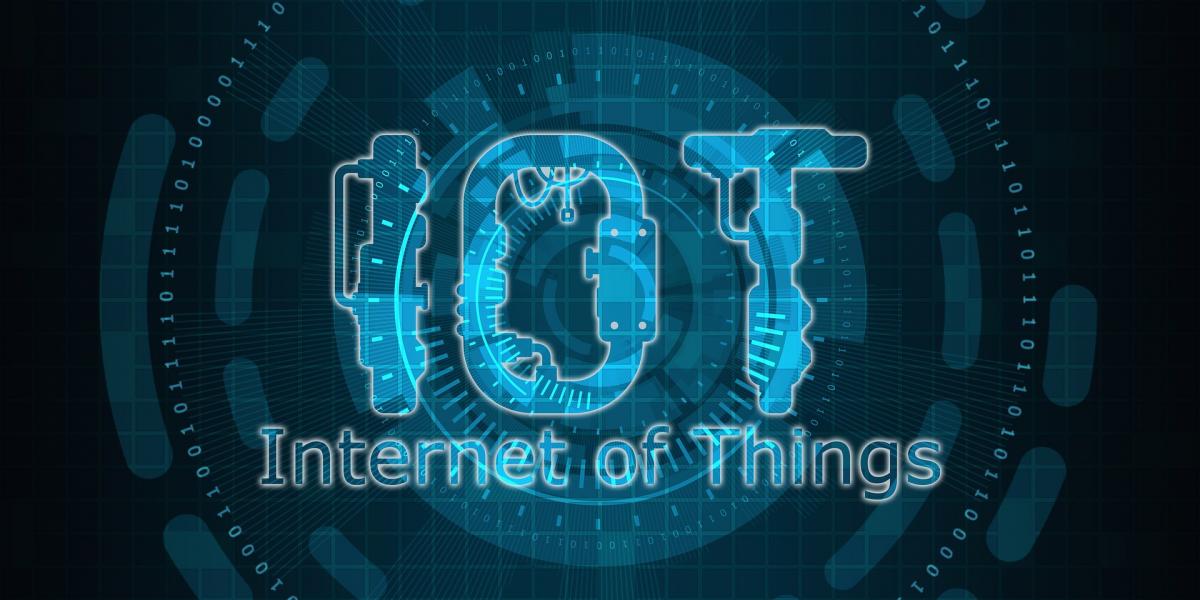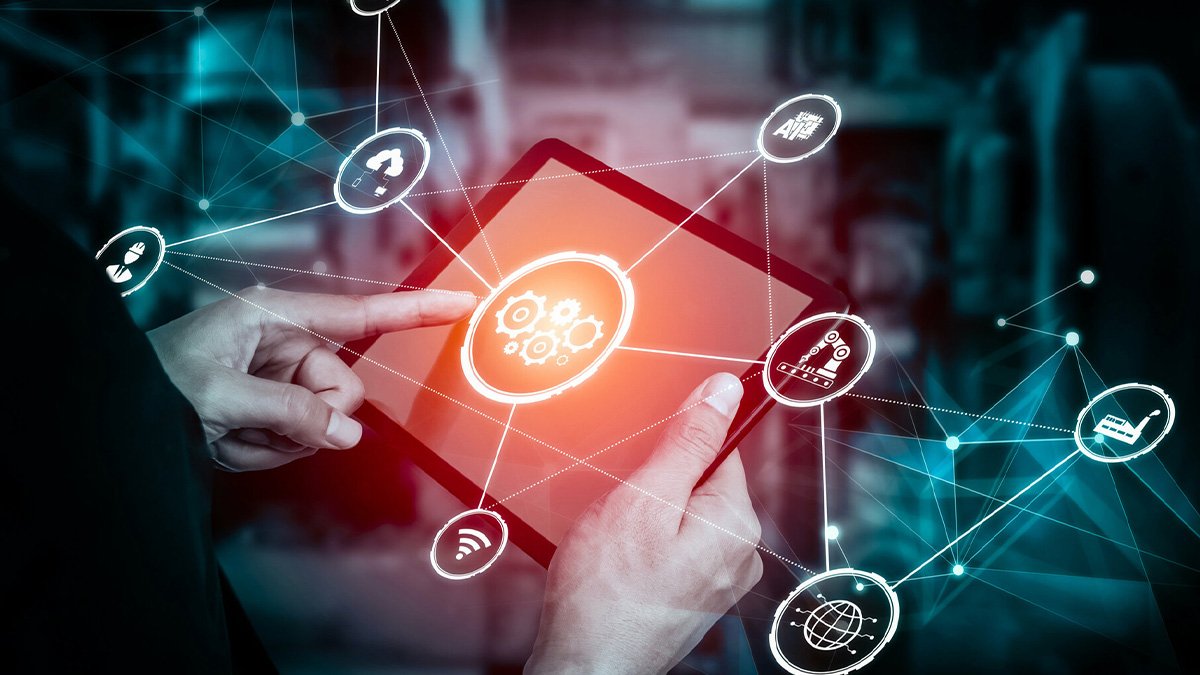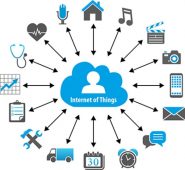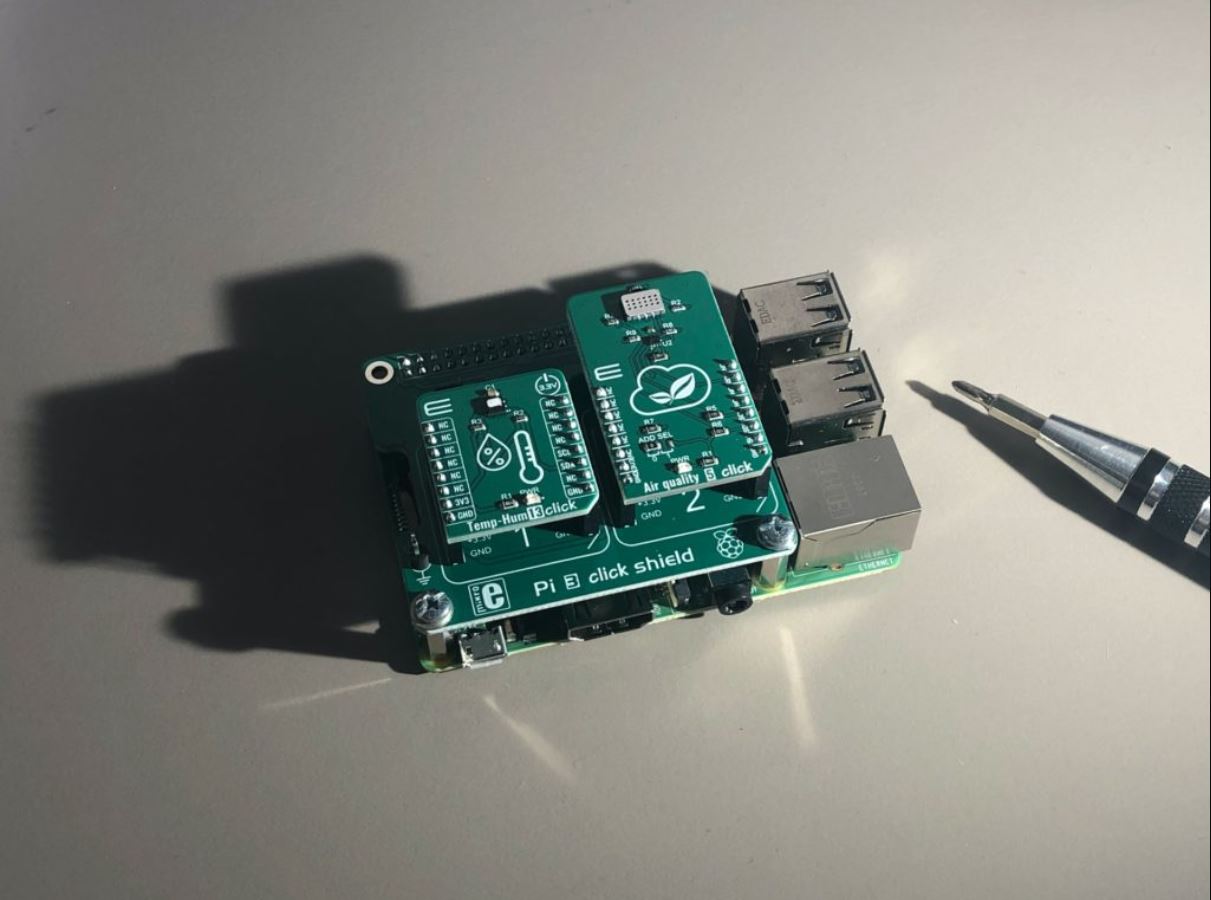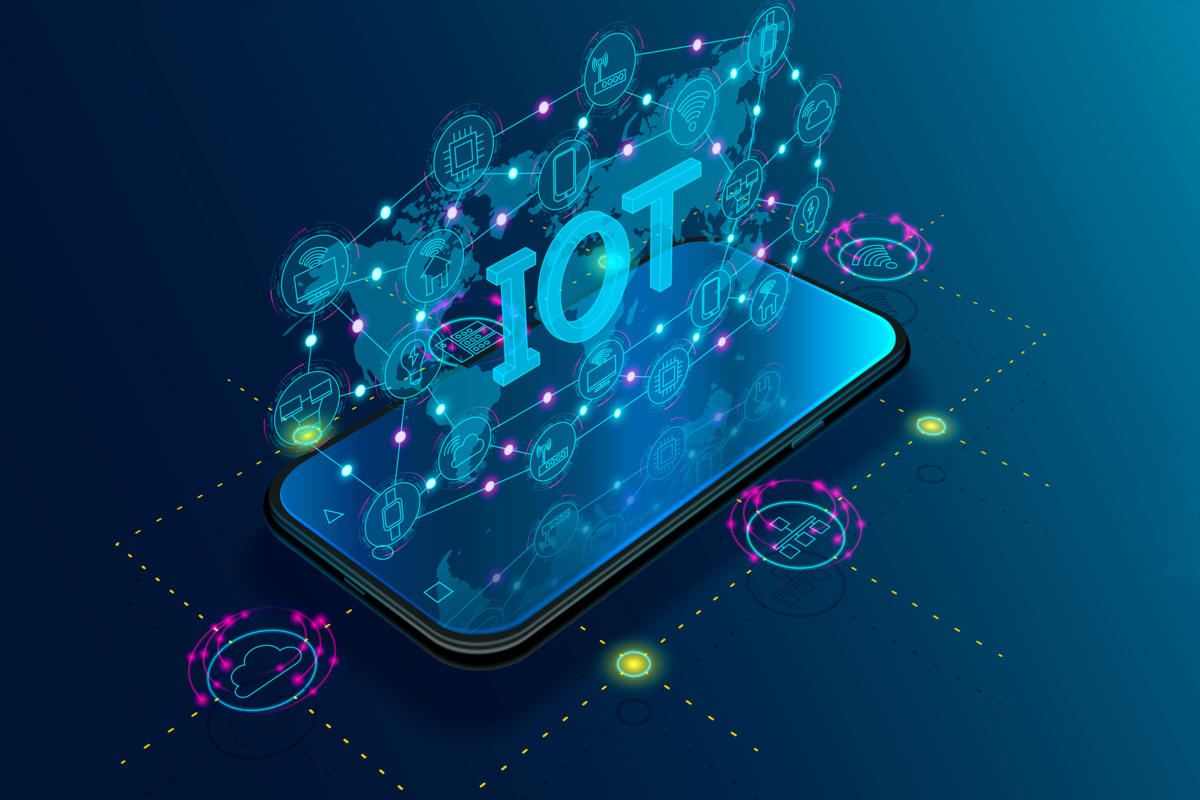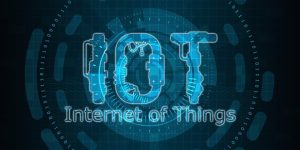The Internet of Things (IoT)
The Internet of Things (IoT) refers to the network of interconnected devices, objects, and systems that can communicate and exchange data over the internet. This revolutionary concept has the potential to transform various aspects of our lives, from our homes to our workplaces, and even to entire cities. The IoT enables increased connectivity and automation, leading to improved efficiency, convenience, and safety.
One of the key benefits of the IoT is the improved connectivity it provides. With IoT devices, everything from appliances to vehicles can be connected to the internet, allowing for seamless communication and control. This connectivity opens up a world of possibilities, from smart homes with connected thermostats and lighting systems to smart cities that optimize transportation and resource usage.
Data collection and analysis is another significant advantage of the IoT. With an abundance of connected devices gathering data, businesses and organizations can gain valuable insights into customer behavior, trends, and patterns. This data-driven approach can facilitate better decision-making, enhance product development, and even enable predictive maintenance in sectors such as manufacturing and healthcare.
Automation and efficiency are greatly enhanced by the IoT. Connected devices can automate processes, eliminating the need for manual intervention and streamlining operations. For example, smart energy meters can monitor usage and adjust power consumption, leading to significant energy savings. Similarly, factories can leverage IoT-enabled sensors to optimize production and minimize waste.
The IoT also contributes to enhanced safety and security. IoT devices can be integrated with security systems, providing real-time monitoring and notifications. Smart surveillance cameras, for instance, can detect and alert individuals of potential threats. Additionally, in healthcare, IoT devices can track vital signs and alert healthcare providers in case of emergencies.
The convenience and smart living enabled by the IoT are undeniable. Connected devices can interact with each other, creating seamless and personalized experiences. Imagine waking up in the morning to a smart alarm clock that adjusts the lighting and plays your favorite music. Or having a smart refrigerator that automatically orders groceries when you run out. These are just a few examples of how the IoT can simplify and enhance our daily lives.
The IoT also has a significant impact on health monitoring and care. Wearable devices, such as fitness trackers, can monitor an individual’s heart rate, sleep patterns, and activity levels. This data can be transmitted to healthcare providers in real-time, allowing for proactive intervention and personalized healthcare recommendations.
Furthermore, the IoT plays a crucial role in achieving environmental sustainability. Connected devices can optimize resource usage, reduce energy consumption, and minimize waste. For example, IoT-enabled sensors can monitor air quality and automatically adjust ventilation systems to ensure optimal indoor air quality. Smart transportation systems can optimize routes, reducing traffic congestion and emissions.
The IoT facilitates the integration of varying technologies. Whether it’s artificial intelligence, machine learning, big data analytics, or cloud computing, the IoT acts as a foundation that connects and harnesses the power of these technologies. This integration opens up new possibilities for innovation and entrepreneurship, encouraging the development of groundbreaking solutions and services.
In summary, the Internet of Things (IoT) brings about a new era of connectivity and automation. From improving efficiency and convenience to enhancing safety and security, the IoT has transformative potential across various sectors. With its ability to collect and analyze data, enable automation, and integrate different technologies, the IoT opens up numerous opportunities for innovation and entrepreneurship.
Improved Connectivity
The Internet of Things (IoT) has revolutionized connectivity by enabling devices, objects, and systems to communicate and exchange data seamlessly over the internet. This enhanced connectivity has numerous benefits and impacts various aspects of our daily lives.
First and foremost, the IoT allows for the connection of everyday objects to the internet, transforming them into smart devices. This connectivity creates a network where these devices can interact with each other and with users, enhancing convenience and efficiency. From smart home devices like thermostats, lighting systems, and security cameras to connected cars and wearable devices, the IoT has permeated our lives and changed the way we interact with technology.
The improved connectivity offered by the IoT also has significant implications for businesses and industries. With IoT devices, companies can gather real-time data about their products, operations, and customers. This data can be used to optimize processes, improve product performance, and gain valuable insights into consumer behavior. For example, a manufacturing company can use IoT sensors to monitor machinery performance and predict maintenance needs, minimizing costly downtime.
In addition to enhancing connectivity between devices, the IoT has also facilitated the creation of smart cities. These urban environments leverage connected technologies to improve the quality of life for citizens. Smart transportation systems, for instance, use sensors and data analysis to optimize traffic flow, reduce congestion, and enhance public transportation efficiency. By connecting various aspects of city infrastructure, such as energy grids, waste management systems, and street lighting, the IoT enables cities to become more sustainable and responsive to citizens’ needs.
Another crucial area where improved connectivity has had a significant impact is healthcare. The IoT has paved the way for telemedicine and remote patient monitoring, allowing medical professionals to provide effective care without the need for in-person visits. Connected devices, such as wearable health trackers and connected medical equipment, constantly monitor patients’ vital signs and transmit the data to healthcare providers. This real-time information empowers healthcare professionals to proactively identify and address health issues, leading to better patient outcomes.
Furthermore, the IoT’s improved connectivity plays a pivotal role in the realm of agriculture. Farmers can utilize connected sensors to monitor soil moisture levels, weather conditions, and crop health. This data enables them to make data-driven decisions about irrigation, fertilizer application, and overall crop management, resulting in increased yields and reduced resource usage.
In summary, the improved connectivity made possible by the Internet of Things (IoT) has transformed our lives, industries, and cities. From enabling smart homes and businesses to fostering connected healthcare and agriculture, the IoT has created a network where devices, objects, and systems can communicate and exchange data seamlessly. As technology continues to advance, the opportunities and benefits of improved connectivity will only continue to grow.
Data Collection and Analysis
One of the key advantages of the Internet of Things (IoT) is its ability to collect and analyze vast amounts of data. Through interconnected devices, the IoT facilitates the gathering of real-time information, providing valuable insights that can drive decision-making and improve various aspects of our lives.
The IoT allows businesses and organizations to collect data from a wide range of sources, including devices, sensors, and customer interactions. This data can be used to gain a deeper understanding of consumer behavior, preferences, and trends. By analyzing this information, companies can make data-driven decisions, personalize customer experiences, and tailor their products and services to meet specific needs.
Furthermore, data collected by IoT devices can be leveraged to optimize operations and reduce costs. For example, in manufacturing, IoT-enabled sensors can track machine performance, detect anomalies, and predict maintenance needs. This proactive approach can prevent costly breakdowns, minimize downtime, and improve overall efficiency. In agriculture, IoT devices can monitor soil conditions and crop health, helping farmers make informed decisions about irrigation, fertilization, and pest control.
Another significant application of data collection and analysis in the IoT is in healthcare. With wearable devices and connected medical equipment, patients’ vital signs, activity levels, and medication adherence can be continuously monitored. This data provides healthcare providers with an accurate and real-time picture of patients’ health status, enabling early detection of any potential issues and more proactive interventions. Additionally, aggregated data from multiple patients can be analyzed to identify patterns and trends, leading to advancements in disease prevention and treatment.
Moreover, the IoT’s data collection capabilities play a role in improving safety and security. Connected devices, such as surveillance cameras and smart locks, can capture and analyze data to detect and respond to potential threats. For instance, an IoT-based security system can detect unauthorized access attempts and send immediate notifications to homeowners or security personnel. This real-time monitoring and analysis enhance the overall safety and security of individuals and properties.
The analysis of data collected by the IoT also contributes to environmental sustainability. By monitoring and analyzing energy consumption patterns, businesses and individuals can identify areas of inefficiency and implement strategies to reduce waste. Smart grid systems, for instance, can analyze energy usage data and optimize distribution, leading to more efficient energy management and lower carbon emissions.
Overall, data collection and analysis are integral components of the IoT. By harnessing the insights gained from the vast amounts of data collected by interconnected devices, businesses can make informed decisions, optimize operations, and improve customer experiences. In healthcare, data analysis can lead to more proactive and personalized care, while in security, it can enhance safety measures. Additionally, the analysis of IoT data can help drive environmental sustainability initiatives and shape a more efficient and responsible future.
Automation and Efficiency
The Internet of Things (IoT) revolutionizes automation and efficiency by enabling seamless connectivity and communication between devices, systems, and processes. By leveraging IoT technologies, businesses and individuals can automate tasks, optimize operations, and improve overall efficiency in various domains.
One of the key benefits of IoT-enabled automation is the elimination of manual intervention. Connected devices can communicate with each other and perform tasks without the need for human intervention, reducing the risk of errors and improving productivity. For example, in a smart home, IoT devices can automate tasks such as adjusting lighting, thermostats, and appliances based on preset preferences or environmental conditions. This automation enhances convenience, saves time, and improves energy efficiency.
In industrial settings, the IoT plays a significant role in optimizing processes and improving operational efficiency. IoT sensors and devices can monitor equipment performance, detect inefficiencies, and enable proactive maintenance. This predictive maintenance approach minimizes downtime and prevents costly equipment failures. Additionally, IoT-enabled systems can optimize inventory management, supply chain logistics, and production schedules by monitoring real-time data and making data-driven decisions.
The IoT’s automation capabilities also extend to the healthcare sector. Connected wearable devices and medical equipment can automate patient monitoring, ensuring continuous data collection and remote tracking of vital signs. This automation enables healthcare professionals to closely monitor patients’ health conditions, detect early warning signs, and intervene promptly. Additionally, automated medication reminders and personalized treatment plans can improve patient adherence and overall healthcare outcomes.
Furthermore, automation in transportation and logistics has been transformed by the IoT. Connected vehicles can leverage real-time data to optimize routes and reduce fuel consumption. Fleet management systems equipped with IoT sensors can monitor vehicle performance, track locations, and enable efficient scheduling, resulting in cost savings and improved delivery efficiency. In smart cities, IoT-enabled traffic management systems can automate traffic flow optimization and reduce congestion, enhancing overall transportation efficiency.
The automation provided by the IoT also extends to agriculture, enabling smart farming practices. IoT sensors can continuously monitor soil moisture levels, temperature, and sunlight, triggering automated irrigation systems to ensure optimal conditions for crop growth. Automated pest control systems can detect and respond to pests, minimizing crop damage and reducing the need for harmful chemicals. This automation not only improves efficiency but also promotes sustainable farming practices.
Overall, the IoT’s automation capabilities significantly enhance efficiency in various sectors. From smart homes to industrial settings, healthcare, transportation, and agriculture, the ability to automate processes and tasks leads to time and resource savings. By leveraging real-time data and making data-driven decisions, businesses and individuals can optimize operations, improve productivity, and achieve higher levels of efficiency.
Enhanced Safety and Security
The Internet of Things (IoT) has significantly enhanced safety and security by leveraging interconnected devices and systems to monitor and respond to potential threats in real-time. This heightened level of safety and security is applicable across various domains, from homes and businesses to cities and critical infrastructure.
In the realm of home security, IoT-enabled devices like smart cameras, door locks, and motion sensors provide homeowners with enhanced protection. These devices can be integrated with security systems and controlled remotely via smartphones, allowing homeowners to monitor their properties from anywhere at any time. Real-time notifications and alerts can be sent in the event of unauthorized access or suspicious activities, enabling prompt responses and minimizing the risk of break-ins or theft.
Similarly, IoT technologies have transformed safety and security in businesses and industries. In manufacturing settings, IoT-enabled sensors can monitor equipment and machinery conditions, identifying any anomalies or potential failures. This proactive approach to maintenance can prevent accidents, optimize production uptime, and ensure employee safety. IoT-based surveillance systems can also help monitor safety compliance, identifying potential hazards and ensuring adherence to safety protocols.
With the rise of smart cities, the IoT plays a crucial role in enhancing safety and security at a larger scale. City-wide IoT networks can be utilized for various purposes, including real-time monitoring of traffic, crime, and environmental conditions. Smart surveillance systems can analyze video feeds, detecting and alerting authorities to suspicious activities or potential threats. IoT sensors can also monitor environmental factors like air quality, helping authorities respond to pollution or emergency situations swiftly.
Moreover, the IoT’s impact on safety and security extends to critical infrastructure such as power grids, transportation systems, and healthcare facilities. IoT-enabled monitoring systems can detect anomalies or potential failures in power grids, enabling prompt response and minimizing downtime. In transportation, IoT-based systems can monitor railway tracks, bridges, and other infrastructure, ensuring their structural integrity and preventing accidents. In healthcare, IoT devices can track patients’ vital signs, detect emergencies, and automatically alert medical personnel, improving response times and saving lives.
Additionally, the IoT plays a crucial role in enhancing personal safety through wearable devices. These devices, such as smartwatches or fitness trackers, can monitor an individual’s heart rate, activity levels, and location. In case of emergencies, they can send automatic alerts to designated contacts or emergency services, ensuring timely assistance.
The enhanced safety and security provided by the IoT rely on robust security measures to protect against cyber threats. Strong authentication mechanisms, encryption protocols, and regular security updates are essential in safeguarding IoT networks and devices from unauthorized access.
In summary, the Internet of Things (IoT) has significantly enhanced safety and security across various domains. From homes and businesses to cities and critical infrastructure, IoT-enabled devices and systems provide real-time monitoring, proactive alerts, and automated responses to potential threats. By leveraging IoT technologies, individuals and organizations can ensure a safer and more secure environment for all.
Convenient and Smart Living
The Internet of Things (IoT) has revolutionized the way we live, bringing convenience and smart living into our daily routines. By connecting devices, appliances, and systems, the IoT has transformed our homes and enabled seamless integration of technology to simplify tasks and enhance our overall quality of life.
One of the key benefits of the IoT is the convenience it offers. Connected devices in a smart home ecosystem can be controlled remotely through smartphones or voice assistants. This means you can turn off lights, adjust the thermostat, and even monitor security cameras from anywhere, making it more convenient to manage and optimize your living environment.
With the IoT, various aspects of our homes become smart and interconnected. For example, imagine waking up to an automated system that adjusts your window blinds, turns on the coffee maker, and starts playing your favorite music as soon as your alarm goes off. Or picture a smart refrigerator that keeps track of your groceries, automatically creates shopping lists when supplies run low, and even suggests recipes based on the ingredients you have.
IoT-enabled devices also optimize energy usage and reduce wastage. Smart thermostats can learn your preferences and adjust the temperature accordingly, resulting in energy savings and cost efficiency. Connected lighting systems can automatically adjust brightness levels based on natural light availability or occupancy, conserving energy without sacrificing comfort.
Furthermore, the IoT has made our lives more convenient by introducing advanced voice assistants and personal assistant devices. These devices, such as Amazon’s Alexa or Google Assistant, can control numerous IoT devices by simply using voice commands. This allows for hands-free control and greater accessibility, making daily tasks more convenient, especially for individuals with disabilities.
Smart living extends beyond our homes and into our cities. With the IoT, cities become “smart cities,” utilizing connected technology to improve efficiency and enhance the quality of life for residents. Smart traffic management systems analyze data in real-time to optimize traffic flow, reducing congestion and minimizing travel times. Smart parking systems guide drivers to available parking spaces, reducing the time spent searching for a spot and minimizing traffic congestion.
The IoT also enables smart healthcare, enhancing convenience and personalized care. Wearable devices can track and monitor vital signs, daily activity levels, and even sleep patterns. This data can be transmitted to healthcare providers, allowing for remote monitoring and early intervention in case of any potential health issues. IoT-enabled telehealth services give individuals convenient access to healthcare professionals from the comfort of their homes.
In summary, the Internet of Things (IoT) has transformed our lives into a convenient and smart living experience. By connecting devices, appliances, and systems, the IoT offers convenience, energy efficiency, personalization, and seamless integration of technology into our daily routines. Smart homes, voice assistants, and connected cities are just a few examples of how the IoT is shaping the way we live and enhancing our overall quality of life.
Health Monitoring and Care
The Internet of Things (IoT) has revolutionized health monitoring and care by enabling continuous, real-time tracking of vital signs, remote patient monitoring, and personalized healthcare interventions. By integrating IoT devices and systems into the healthcare industry, individuals can have access to improved health monitoring and personalized care, enhancing overall well-being.
Wearable devices, such as fitness trackers and smartwatches, play a significant role in health monitoring. These devices can track various health metrics, including heart rate, sleep patterns, and daily activity levels. IoT-enabled wearables provide individuals with instant access to their health data, encouraging them to become more proactive in managing their health and well-being. The collected data can be analyzed over time to identify patterns, detect anomalies, and provide insights into potential health issues.
Remote patient monitoring is another area where the IoT has made remarkable advancements. IoT devices, such as connected medical devices or wearables, can transmit real-time health data to healthcare providers, allowing for continuous monitoring and closer management of patients with chronic conditions or those undergoing post-operative care. These devices can track vital signs, medication adherence, and other relevant health data, enabling healthcare professionals to remotely monitor patients’ health conditions, provide timely interventions, and adjust treatment plans accordingly.
IoT-enabled telehealth services have democratized access to healthcare by breaking geographical barriers. Individuals can now consult with healthcare providers remotely using video conferencing, reducing the need for in-person visits, especially for individuals living in remote areas or those with limited mobility. Telehealth services enable efficient and convenient healthcare delivery, making healthcare more accessible and reducing unnecessary hospital visits.
Additionally, IoT devices promote personalized healthcare interventions. By collecting and analyzing individual health data, healthcare providers can tailor treatment plans to meet specific needs. For example, patients with chronic conditions can receive real-time personalized feedback and interventions based on their health data. IoT devices also facilitate the gathering of patient-reported outcomes and subjective data, aiding in the assessment of treatment effectiveness and patient satisfaction.
The IoT’s impact on healthcare extends to the realm of medication adherence. IoT-enabled smart pill containers and medication dispensers can remind individuals to take their medications at the appropriate times and notify healthcare providers if doses are missed. This improves medication adherence and reduces the risk of medication errors, especially in individuals with complex medication regimens.
Furthermore, the IoT has significant implications for aging-in-place and elderly care. Connected devices, such as fall detectors and remote monitoring systems, can provide a sense of security for older adults while allowing their loved ones or caregivers to remotely monitor their well-being. IoT-enabled smart homes can be equipped with sensors that detect changes in activity levels or abnormal behaviors, alerting caregivers to potential health emergencies or cognitive decline.
In summary, the Internet of Things (IoT) has had a profound impact on health monitoring and care. Wearable devices, remote patient monitoring systems, telehealth services, and IoT-enabled medication adherence solutions have transformed healthcare delivery and made personalized care more accessible. By leveraging the power of IoT devices and systems, individuals can actively participate in their healthcare journey, leading to improved health outcomes, increased patient engagement, and enhanced well-being.
Environmental Sustainability
The Internet of Things (IoT) is playing a crucial role in promoting environmental sustainability by enabling smart solutions that optimize resource usage, reduce waste, and minimize the carbon footprint. By harnessing the power of connected devices and data analytics, the IoT is driving innovation and facilitating a more sustainable future.
One of the key contributions of the IoT to environmental sustainability is the ability to monitor and optimize energy consumption. IoT-enabled smart meters can provide real-time data on energy usage, allowing individuals and businesses to identify areas of inefficiency and make informed decisions on reducing consumption. By pinpointing energy-intensive devices and implementing energy-saving measures, such as adjusting usage patterns and optimizing settings, significant energy savings can be achieved.
Smart building systems, enabled by the IoT, can optimize energy usage by controlling lighting, temperature, and ventilation based on occupancy and environmental conditions. Connected sensors can detect occupancy in rooms, automatically adjusting lighting and HVAC systems to optimize energy usage in unoccupied spaces. These systems not only reduce energy waste but also provide occupants with a comfortable and environmentally friendly living and working environment.
Furthermore, the IoT facilitates efficient waste management through real-time monitoring and data analysis. Connected waste management systems use sensors to monitor the fill levels of waste bins. This data is analyzed to optimize waste collection routes, ensuring collection only when necessary. By reducing unnecessary waste collection trips, fuel consumption and greenhouse gas emissions from waste management vehicles can be minimized.
The IoT also aids in water conservation by monitoring and optimizing water usage. IoT-enabled irrigation systems can analyze weather conditions, soil moisture levels, and plant requirements to deliver the optimal amount of water needed for irrigation. This precision watering minimizes water waste, ensures plants receive adequate hydration, and conserves valuable water resources. Connected sensors can also detect leaks in water supply systems, enabling early detection and timely repairs, reducing water loss and preventing further damage.
Moreover, the IoT contributes to environmental sustainability in transportation. Connected vehicles and smart traffic management systems can optimize traffic flow, reducing congestion and fuel consumption. Real-time traffic data and intelligent routing help drivers find the most efficient routes, minimizing travel time and emissions. Smart parking systems guide drivers to available parking spaces, reducing the amount of time spent searching for parking, thus reducing traffic congestion and emissions associated with idling vehicles.
The IoT also enables sustainability in agriculture through precision farming. Connected sensors monitor soil moisture, temperature, and nutrient levels, allowing farmers to optimize irrigation, fertilization, and pest control. This targeted approach reduces the use of water, fertilizers, and pesticides, minimizing the impact on the environment while still ensuring optimal crop yields.
In summary, the Internet of Things (IoT) is promoting environmental sustainability by optimizing resource usage, reducing waste, and minimizing the carbon footprint. Through intelligent monitoring, data analytics, and interconnected systems, the IoT enables energy efficiency, waste management, water conservation, and sustainable agriculture practices. By leveraging the power of the IoT, individuals, businesses, and communities can contribute to a more sustainable future.
Integration of Varying Technologies
The Internet of Things (IoT) acts as a catalyst for the integration of varying technologies, leading to innovative solutions and enhanced functionality. By connecting different technologies and systems, the IoT enables seamless data exchange, interoperability, and collaboration between devices, unlocking new potentials and providing a more integrated and cohesive experience.
The IoT serves as a foundational framework that enables the integration of technologies such as artificial intelligence (AI) and machine learning (ML). By combining the power of IoT sensors and AI algorithms, devices can analyze data in real-time and make intelligent decisions. For example, with IoT-enabled AI-powered surveillance cameras, objects can be detected, identified, and tracked, enhancing security monitoring and threat detection capabilities.
Cloud computing plays a significant role in the integration of technologies within the IoT ecosystem. The cloud enables scalable storage, processing power, and data analysis capabilities, allowing IoT devices to securely store and leverage the vast amounts of data collected. Cloud-based platforms provide the infrastructure to manage and analyze IoT data, facilitating advanced data analytics and insights generation.
Big data analytics is another crucial technology integrated with the IoT, enabling the extraction of valuable insights from vast volumes of data generated by interconnected devices. Through sophisticated analytics algorithms, patterns, trends, and correlations can be identified, helping businesses make data-driven decisions, optimize processes, and improve customer experiences. In sectors such as healthcare, big data analytics can drive personalized medicine by analyzing large-scale patient data and providing insights into treatment effectiveness.
The emergence of edge computing technology has further enhanced the integration within the IoT ecosystem. Edge computing enables processing and analysis of data closer to the source, reducing latency and enabling real-time decision-making without depending heavily on cloud-based infrastructure. With edge computing, the IoT can leverage local processing capabilities to perform critical tasks swiftly and efficiently, making it ideal for applications requiring low latency or high reliability.
The integration of blockchain technology with the IoT holds great promise for enhancing security, privacy, and trust in IoT deployments. Blockchain provides a decentralized and immutable ledger that can secure and verify IoT transactions, ensuring data integrity, authentication, and non-repudiation. This integration enables secure and transparent supply chain management, decentralized energy trading, and secure data sharing in IoT ecosystems.
Moreover, the IoT facilitates integration with virtual reality (VR) and augmented reality (AR) technologies, creating immersive and interactive experiences. VR and AR can enhance training programs, maintenance processes, and remote assistance, providing real-time visualizations and instructions. For example, in manufacturing, technicians can use AR headsets to receive real-time guidance and virtual overlays, facilitating complex assembly tasks with precision.
In summary, the Internet of Things (IoT) serves as a foundational framework for the integration of varying technologies. By combining AI, ML, cloud computing, big data analytics, edge computing, blockchain, and VR/AR, the IoT creates a cohesive ecosystem that enables seamless data exchange, advanced analytics, enhanced security, and immersive experiences. Embracing the integration of these technologies opens up a world of possibilities, driving innovation and fostering the development of transformative solutions in diverse industries.
Opportunities for Innovation and Entrepreneurship
The Internet of Things (IoT) presents abundant opportunities for innovation and entrepreneurship, fostering the development of groundbreaking solutions and opening doors to new business ventures. The interconnected nature of IoT devices, coupled with the vast amounts of data generated, creates an environment ripe for creative and entrepreneurial endeavors across various industries.
One of the key opportunities lies in developing IoT-enabled products and services that enhance people’s lives and solve real-world challenges. By leveraging the power of IoT technologies such as sensors, connectivity, and data analytics, entrepreneurs can create innovative solutions that address specific needs and pain points. From smart home devices and wearable health trackers to energy management systems and agriculture optimization tools, the possibilities to create impactful and value-driven products are virtually endless.
The IoT also creates opportunities for entrepreneurs to build new business models and revenue streams. By integrating IoT technologies into traditional industries, entrepreneurs can disrupt established markets and introduce new ways of delivering products and services. For example, in the transportation sector, ride-sharing companies have transformed the industry by using IoT-connected vehicles, mobile apps, and data analytics to optimize routing and improve customer experiences.
Data is an invaluable asset in the IoT ecosystem, opening up opportunities for entrepreneurs to offer data-centric services. By collecting, analyzing, and interpreting IoT-generated data, entrepreneurs can provide valuable insights, predictive analytics, and actionable recommendations. These data-driven services can help businesses optimize operations, make informed decisions, and gain a competitive edge. Farmers can benefit from IoT-powered agriculture platforms that provide weather forecasting, soil analysis, and crop optimization recommendations.
The integration of IoT with artificial intelligence (AI) and machine learning (ML) technologies amplifies the potential for innovation and entrepreneurship. Entrepreneurs can develop AI-powered applications that leverage IoT data to automate processes, optimize performance, and create personalized experiences. For example, chatbots integrated with IoT devices can provide conversational interactions and smart assistance, enhancing customer experiences and improving operational efficiency in various industries.
The IoT also enables entrepreneurs to address sustainability challenges by developing eco-friendly solutions. By leveraging IoT technologies to optimize resource usage, reduce waste, and minimize environmental impact, entrepreneurs can develop sustainable products and services that resonate with environmentally conscious consumers. Smart energy management systems, waste reduction platforms, and sustainable agriculture solutions are just a few examples of areas where IoT-driven entrepreneurship can make a significant impact.
Moreover, the expansion of the IoT creates opportunities for entrepreneurs to provide consulting and advisory services. As businesses and organizations adopt IoT technologies, they require expertise in implementation, cybersecurity, data privacy, and operational strategy. Entrepreneurs can build consulting firms that specialize in helping clients navigate the complex IoT landscape and leverage its potential effectively.
In summary, the Internet of Things (IoT) presents a vast array of opportunities for innovation and entrepreneurship. By creating IoT-enabled products and services, developing new business models, offering data-centric solutions, integrating AI and ML technologies, addressing sustainability challenges, and providing consulting services, entrepreneurs can harness the potential of the IoT to transform industries, solve real-world problems, and drive economic growth. Embracing the possibilities offered by the IoT ecosystem can fuel entrepreneurial endeavors and pave the way for a more connected and innovative future.







